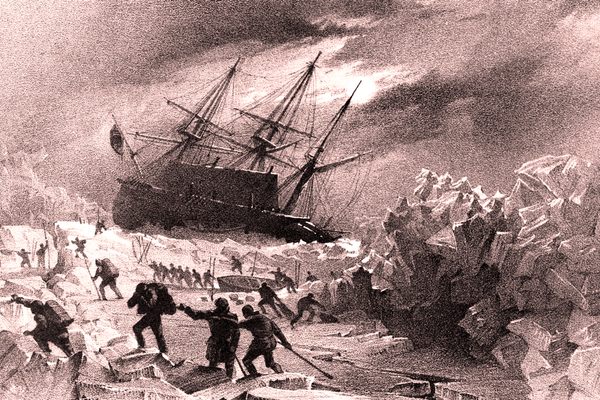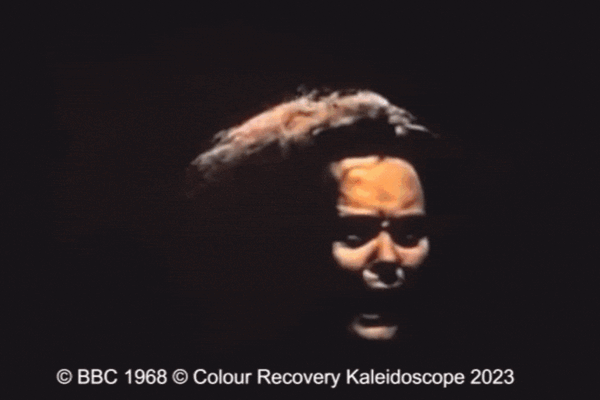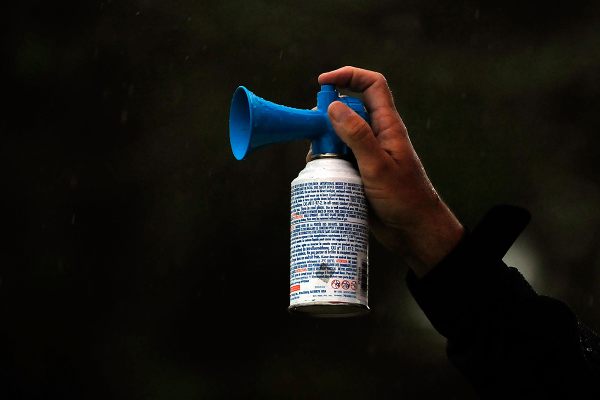The Surprisingly Deep Influence of Trashy TV Dance Parties
In the 20th century, teen cultural politics played out on sound stages around the country.

The closing titles for Dance Party USA. (Photo: Museum of Classic Chicago Television/YouTube)
With awkward fashion and decidedly non-professional dancers, Dance Party USA was a poor man’s American Bandstand. It was the kind of show where Stacey Q’s “Two of Hearts” and Nice & Wild’s “Diamond Girl“—yesssss!—played on repeat. On Dance Party USA, which ran from 1986-1992, all the guys wanted to be George Michael—one regular, Bob Catalano, who never took off his sunglasses, lip-synced to Wham’s “Last Christmas” as a Christmas gift to his fans—and all the girls wanted to be Madonna. (There was one exception: Heather “Princess” Day’s only desire was to be the white female version of Prince. She now owns a pole dancing fitness studio.) Asymmetrical haircuts, leggings, bold colors and banana clips conspired to give the late ‘80s and early ‘90s a teen dance show to call its own.
Even future celebrities look like typical teens. At one point, a 16-year old Kelly Ripa came out in a shimmering gold scarf draped over one eye, and a black tutu for a special “New Wave” episode.

All of this silliness, though, belied the surprisingly deep impact that Dance Party USA and other teen dance shows have had on pop culture around the world. The teen dance show has been a staple of television since the beginning—it reflected and shaped young people’s attitudes throughout the 20th century.
This is very hard to imagine now because teens have so many outlets, but in 1988, if you wanted to check out what other kids were doing, you had two choices: cruise the mall or turn on your television. Dance Party USA and other teen dance shows like Club MTV or San Francisco’s Dance Party and the infinitely-cooler NYC-based hip-hop dance show, Graffiti Rock, co-opted teen styles for kids at home trying to figure out what to wear (or what not to wear), how to act and how to dance.
“Teen dance shows,” explains Hairspray creator John Waters in an interview from 1988, “taught you how to be a teenager.”
This was especially true in the late 1950s and early 1960s when countless local teen dance shows gave isolated and sex hungry teenagers a view into what it looked like to interact—even in the most infinitesimal and awkward ways—with the opposite sex.

Dance Party USA in action. (Photo: Signature Productions/YouTube)
Teen dance shows of the ‘50s and ‘60s also gave kids a sense of rebellion, writes American Dance author Megan Pugh, and ultimately became symbolic of the Civil Rights Movement. White teens bipped and bopped and hand-jived or did “the stroll” or “the madison”—all dances and songs by black musicians and black singers.
Oh, black teens could dance—just not with the white kids.
Washington D.C.’s The Milt Grant Show offered “Black Tuesday” and Baltimore’s The Buddy Deane Show had “Negro Day” because they were equal opportunity racists. American Bandstand was just as segregationist. “We select people whose last names sound Italian, Jewish, or foreign…less chance of picking Negroes that way,” a staff member told a journalist at the time. According to historian Matt Belmont, author of The Nicest Kids in Town, one Philadelphia journalist called Bandstand, “One of the most famous Jim Crowed shows on television.”
A few short-lived all-black teen dance shows popped up as a response: There was Teenarama out of Washington D.C., The Mitch Thomas Show (also known as the “Black Bandstand”) out of Wilmington, Delaware and Teen Frolics out of Raleigh, North Carolina. On August 12, 1963, just two weeks before Martin Luther King Jr. delivered his “I Had A Dream” speech at the March on Washington, black and white teens, led by civil rights groups, flooded an all-white live taping of The Buddy Deane Show. The kids danced cheek to cheek. (The moment was immortalized in John Waters’ Hairspray.)
Five months later, The Buddy Deane Show was cancelled.
Though the majority of these shows are off air, the teen dance show phenomenon isn’t a relic yet. Dancin’ On Air out of Philadelphia still airs on the Fuse Network, but it’s been dovetailed into a reality show featuring the regulars. San Francisco’s KOFY also revived their ‘80s Dance Party in 2011, sticking with the ‘80s theme. An episode of Dance Party looks like a bar mitzvah from 1985. The music is awful, at least three people are doing the robot, and everyone’s having a really good time. According to The Bay Citizen, 400 people showed up to dance on the show for a 2012 taping; it’s gotten so popular that auditions are required.
The only difference between the original teen dance shows and the current iteration might be the age of the participants: San Francisco’s Dance Party features a 66-year old woman named “Lady Gold” who dances resplendently in red lamé. It’s no surprise that the re-booted dance parties cater to those who grew up with them.












Follow us on Twitter to get the latest on the world's hidden wonders.
Like us on Facebook to get the latest on the world's hidden wonders.
Follow us on Twitter Like us on Facebook